
2021-03-22-14-58-08.jpg from: https://www.britishbryologicalsociety.org.uk/learning/species-finder/scapania-undulata/
Exploring the Fascinating World of Scapania Moss
Introduction
Mosses are some of the most ancient and resilient plants on Earth, with over 12,000 species found across the globe. In this post, we’ll take a closer look at one particularly interesting moss species: Scapania undulata var. dentata (Dumort.) McArdle

Scapania-cf.-undulata-(L.)-Dumort.-106183.jpg from: https://www.biodiversidadvirtual.org/herbarium/Scapania-cf.-undulata-(L.)-Dumort.-img106183.html
, commonly known as Scapania moss. This small but mighty plant plays important ecological roles and has some unique adaptations. Let’s dive in and learn more about the wonderful world of Scapania moss!
Background
Scapania undulata var. dentata is a species of leafy liverwort moss in the Scapaniaceae family. It belongs to the class Jungermanniopsida and the division Marchantiophyta. The species name “undulata” refers to the wavy margins of the leaves. This moss is found in many regions around the world, from Europe to Asia to North America.
Morphology and Identification
Scapania moss forms small, dense mats on rocks, logs, and soil in damp, shaded habitats. The shoots are
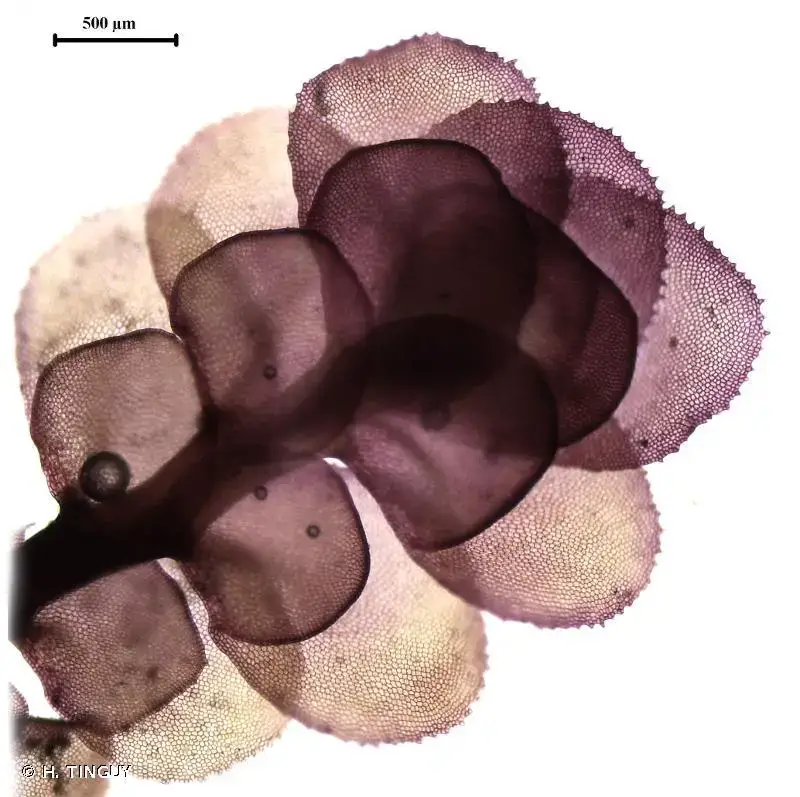
219250.jpg from: https://inpn.mnhn.fr/espece/cd_nom/6540
prostrate to ascending and typically measure 1-5 cm long. The leaves are arranged in two rows and are unequally bilobed. The upper lobe is larger than the lower and has
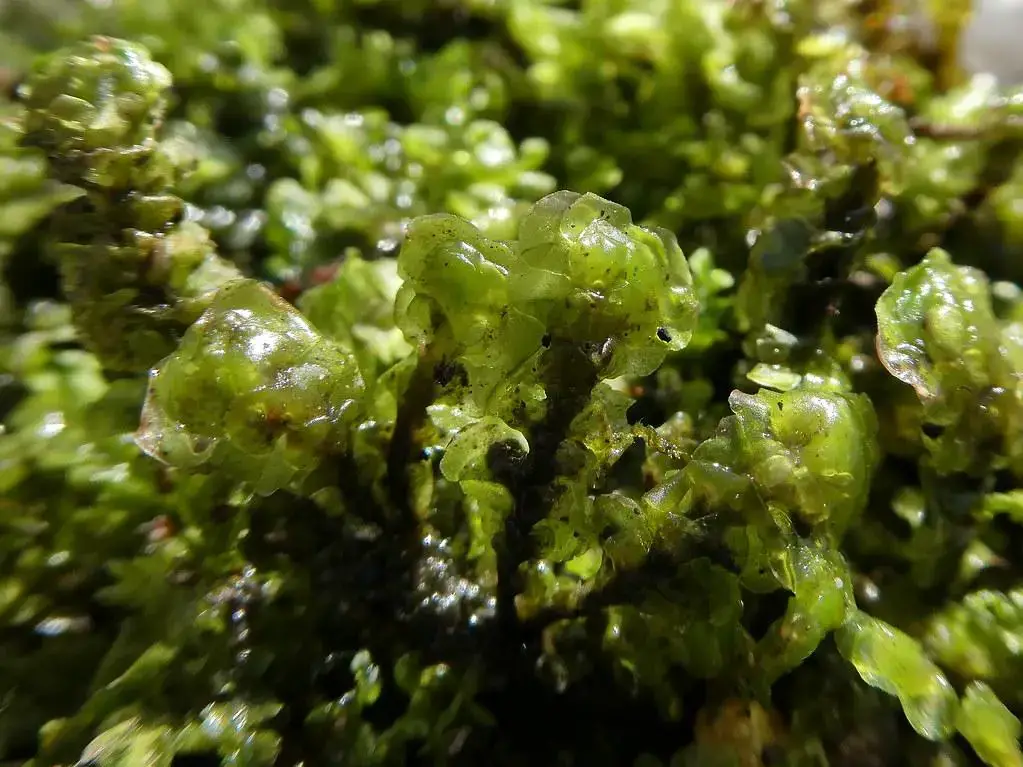
49820390266_b24e13f28b_b.jpg from: https://www.flickr.com/photos/21657471@N04/49820390266/
dentate (toothed) margins, hence the variety name “dentata”.
The leaves are pale to yellowish-green in color. Oil bodies are present in the leaf cells which contain aromatic compounds. The underleaves are small to absent. Rhizoids are present and help anchor the moss to its substrate.
Scapania reproduces via spores produced in capsules on short setae. The spores are small, usually 10-15 μm in diameter. Scapania can also reproduce asexually via fragmentation of the shoots or leaves.
Global Distribution and Habitat
Scapania undulata var. dentata has a circumboreal distribution

Scapania_undulata,I_MWS76028.jpg from: https://www.discoverlife.org/mp/20q?search=Scapania&flags=col2:&res=640
, found throughout the cooler regions of the Northern Hemisphere. It occurs in Europe, Asia, and North America, ranging from the Arctic and alpine zones to the temperate regions.
This moss inhabits various damp, shaded microhabitats, often in montane to subalpine

sc_undulata.jpg from: https://wnmu.edu/academic/nspages/gilaflora/scapania_undulata.html
zones. It commonly grows on rocks, logs, banks, and soil along streams, in gorges, near waterfalls, and in other constantly humid areas in forests. It prefers acidic substrates and is considered a calcifuge.
Ecological Roles and Adaptations
As a poikilohydric, ectohydric bryophyte, Scapania moss plays important roles in its ecosystems:

Scapania%2Bundulata%2B5sb.jpg from: https://southwalesbryos.blogspot.com/2015/11/scapania-undulata.html
Nutrient cycling: It efficiently absorbs nutrients from water flowing over it and makes them available to invertebrates and other organisms in the food web when eaten.
Substrate stabilization: The dense mats help prevent soil erosion and stabilize stream banks. The mats also build soil as older parts decay.
Microhabitat creation: The complex texture provides shelter and retains moisture for various microorganisms, invertebrates, and other small creatures.
Carbon sequestration: Like all plants, Scapania moss fixes atmospheric carbon dioxide, acting as a small but widespread carbon sink.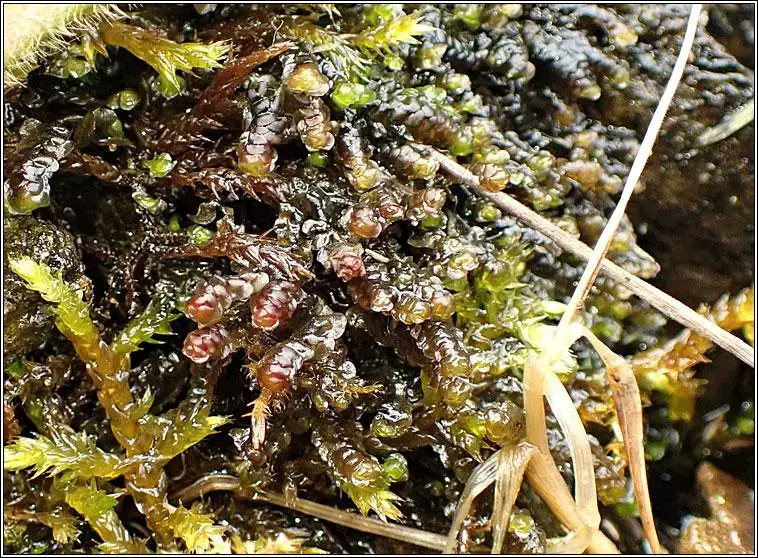
liv-24a2.jpg from: https://www.irishwildflowers.ie/pages-liverwort/liv-24.html
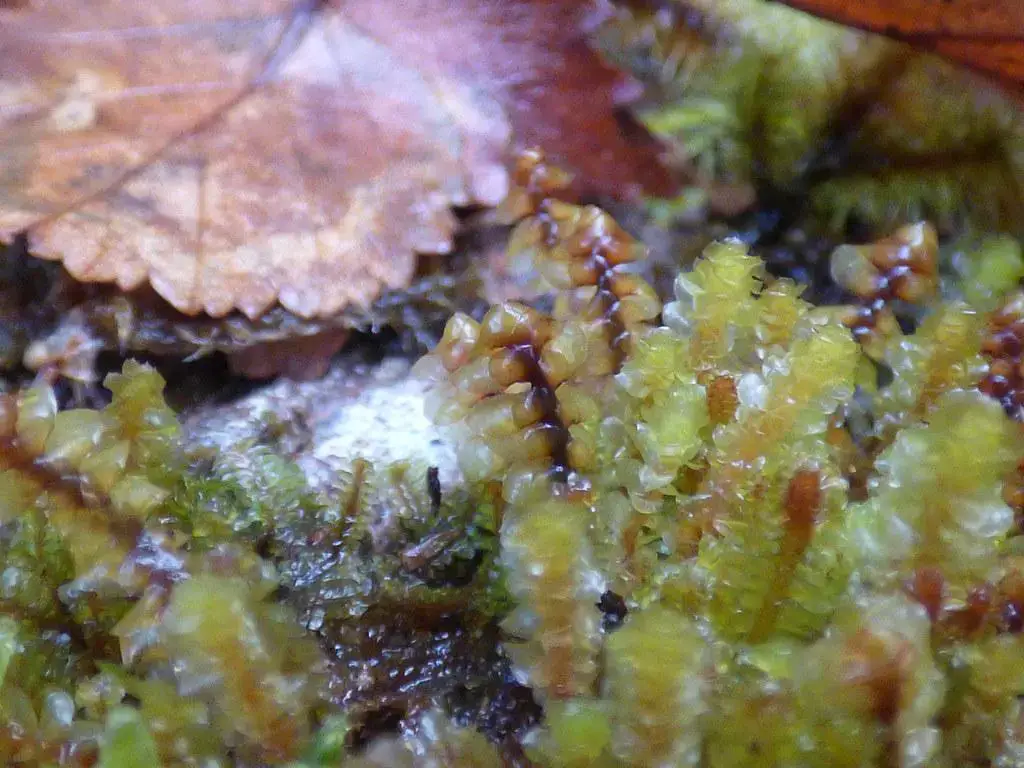
32472594258_48fa7ed42b_b.jpg from: https://www.flickr.com/photos/pinkfootedgus/32472594258
Scapania has several adaptations to its semi-aquatic, low-light niche:
Poikilohydry: It can tolerate drying out and quickly rehydrate when water is available again. The leaves curl inward when dry to reduce water loss.
Ectohydry: It readily absorbs water and dissolved nutrients over its surface since it lacks true roots. The wavy-toothed leaf margins help hold a film of water.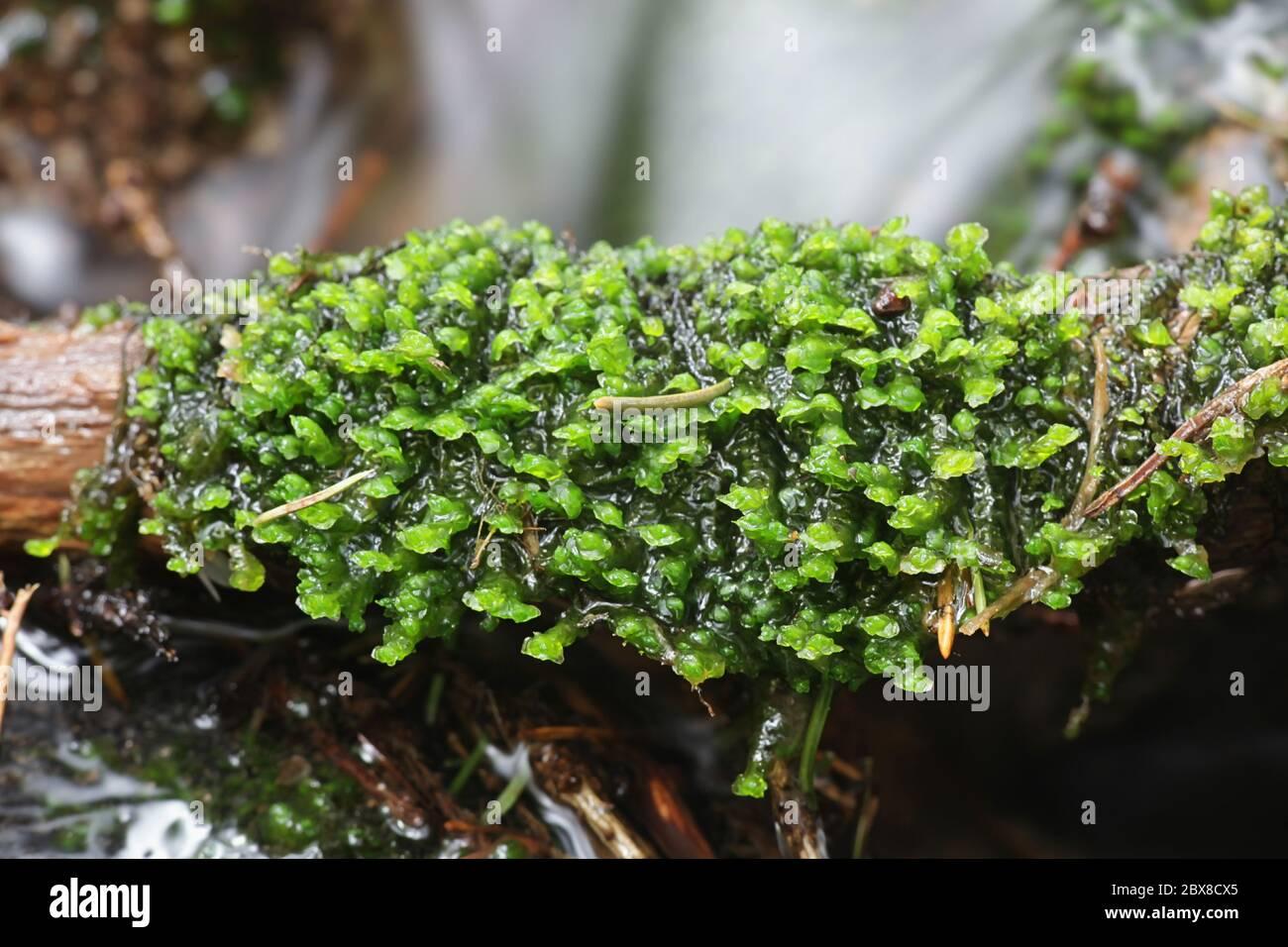
scapania-undulata-known-as-water-earwort-a-liverwort-growing-on-forest-streams-in-finland-2BX8CX5.jpg from: https://www.alamy.com/scapania-undulata-known-as-water-earwort-a-liverwort-growing-on-forest-streams-in-finland-image360374173.html
Low light adaptations: It has a high chlorophyll content and large, exposed oil bodies to maximize photosynthesis in the dim understory.
Conclusion
Scapania undulata var. dentata is a small but fascinating moss with a wide distribution and important ecological roles. Its unique adaptations allow it to thrive in its niche and support a diversity of life. Next time you’re in the mountains, keep an eye out for this amazing little plant! What other cool bryophytes have you noticed on your adventures?